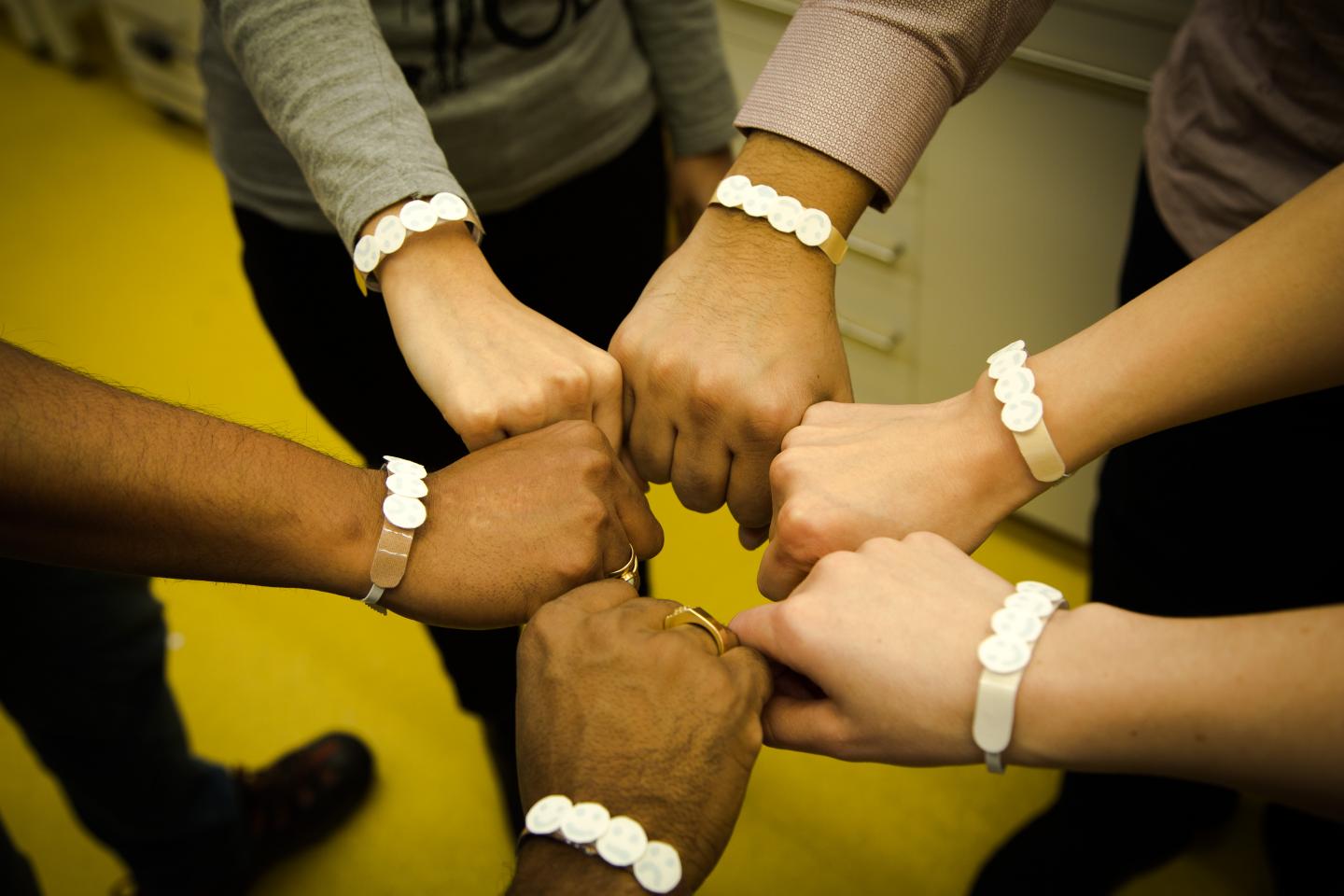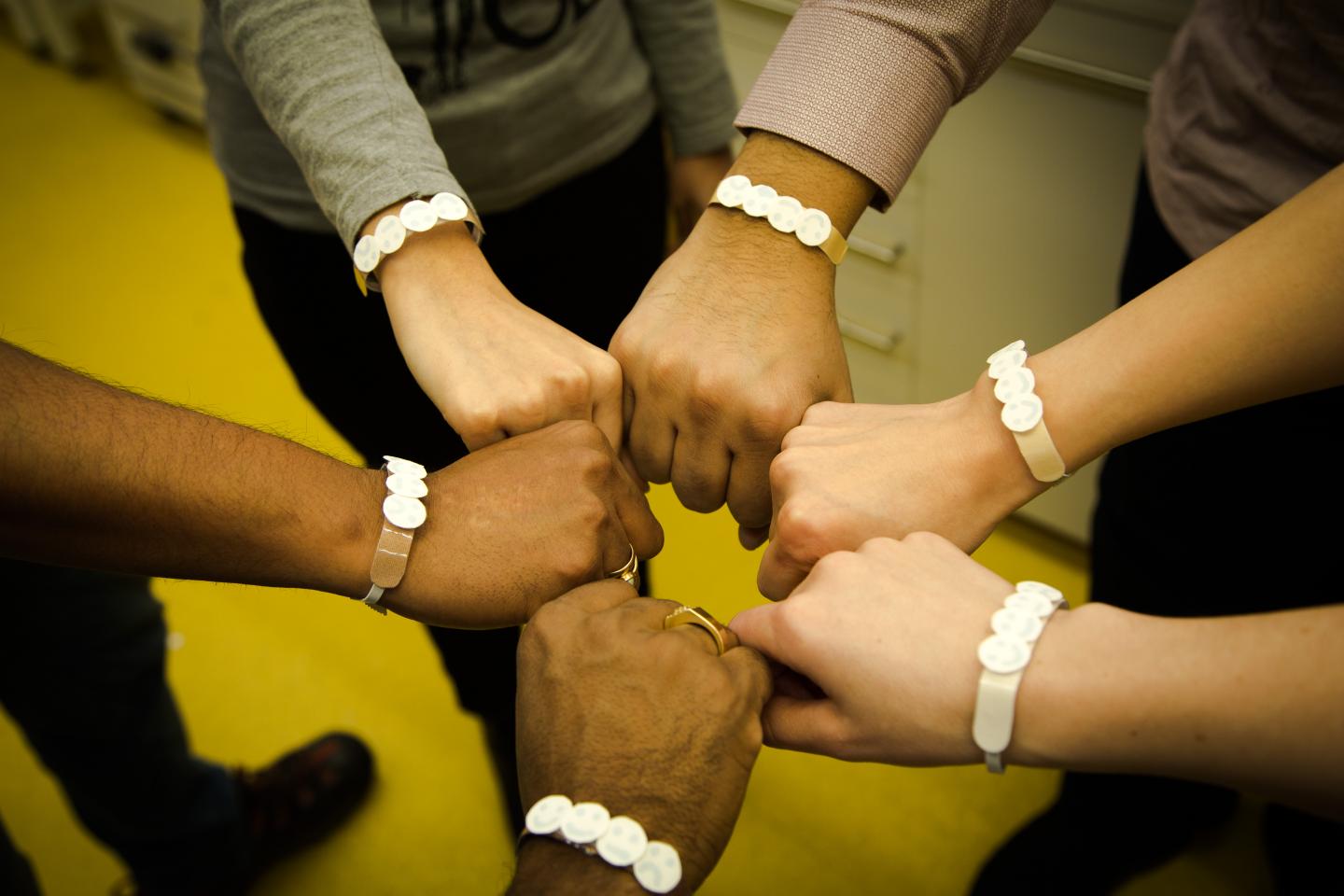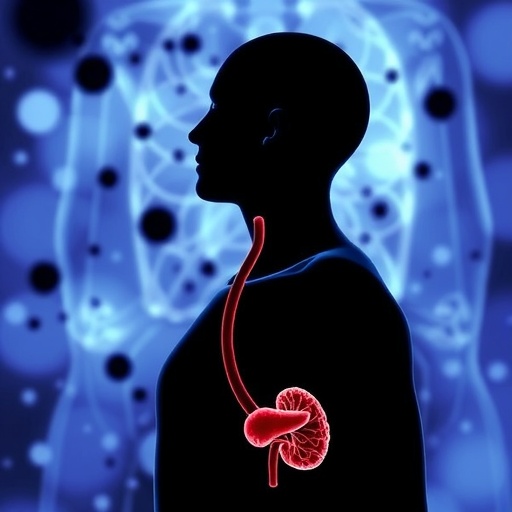
Credit: RMIT University
Keeping an eye on your personal ultraviolet (UV) exposure throughout the day could soon be as simple as wearing a sticker thanks to new wearable sensors that help people manage vitamin absorption and avoid sun damage.
A personal struggle with Vitamin D deficiency led Professor Vipul Bansal to develop the color-changing sensors that come in six variations to reflect the range in human skin tone.
Bansal said the discovery could help to provide people with an accurate and simple measure of their personal exposure levels throughout the day.
"We can print our ink on any paper-like surface to produce cheap wearable sensors in the form of wrist-bands, head bands or stickers for example," he said.
While humans do need some sun exposure to maintain healthy levels of Vitamin D, excessive exposure can cause sunburn, skin cancer, blindness, skin wrinkling and premature signs of aging.
Knowing what a healthy amount is for you depends on understanding your personal classification, from Type I to VI, as each has very different solar exposure needs.
Diseases such as Lupus and many medications increase the photosensitivity of our skin and reduce our ability to absorb Vitamins through diet, making monitoring our sun exposure thresholds highly individual.
"We are excited that our UV sensor technology allows the production of personalised sensors that can be matched to the specific needs of a particular individual," said Bansal.
"The low cost and child-friendly design of these UV sensors will facilitate their use as educational materials to increase awareness around sun safety."
Currently the only guide for managing sun exposure is UV index however this blunt tool only indicates the intensity of UV rays. It does not act as a precise tool to monitor each individual's daily exposure.
Fair skin (Type I) can only tolerate only one fifth of the UV exposure that dark skin (Type VI) can before damage occurs, while darker types require longer in the sun to absorb healthy amounts of Vitamin D.
The discovery also has application beyond the health sector as over time UV rays can have damaging effects on the lifetime of many industrial and consumer products.
Monitoring this exposure could help improve the safety and reliability of a range of items, including vehicles and military equipment, with huge potential cost savings.
###
The paper titled, "Skin color-specific and spectrally-selective naked-eye dosimetry of UVA, B and C radiations" by Bansal's team member, Vice-Chancellor's PhD scholar Wenyue Zou has been published in Nature Communications (DOI: 10.1038/s41467-018-06273-3).
Media Contact
Grace Taylor
[email protected]
61-499-515-097
@RMIT
http://www.rmit.edu.au
Related Journal Article
http://dx.doi.org/10.1038/s41467-018-06273-3





